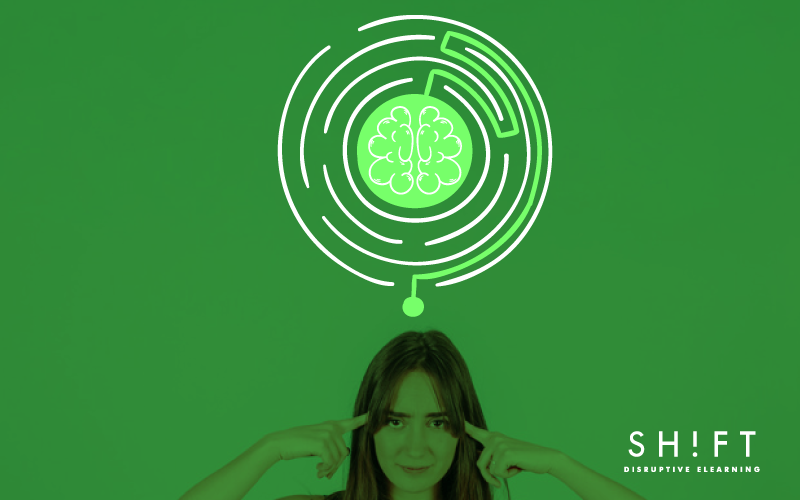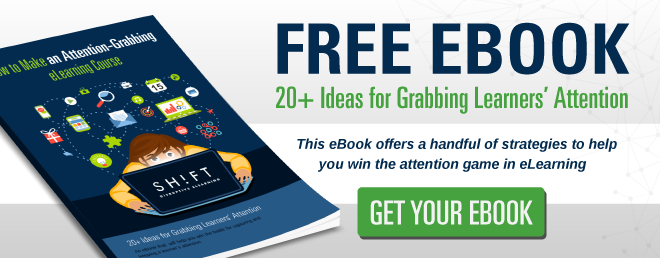Adult Learning highlights that adult learners are fundamentally different in their methods of learning in comparison with children. As an L&D professional, you need to understand these differences and figure out the best ways to apply them to meet your learner's needs.
With adult learners, you will encounter unique expectations, demands, and challenges. The key is to accommodate these and design training and eLearning courses in a manner that is most effective and engaging for them.
While there are multiple methodologies to make this happen, there is a model proposed by Lila Davachi, Associate Professor of Psychology at New York University that is known to be effective. Known as AGES (Attention-Generation-Emotion-Spacing), this model highlights four key elements that are essential for effective adult learning to happen.

Let us go through the four parts in detail now.
1) Attention
"Learning that happens while multitasking cannot be generalized— and does not result in understanding or the ability to recall when needed." --The Maritz Institute
The first and foremost step in any learning process is to gain the learner's attention. While a little distraction is good in some situations, during learning, it is important that the learner is single-mindedly focused. This is especially true when a person is trying to learn something new. Research has revealed that though it is physically possible to multitask, the efficiency and effectiveness of the time taken to complete a task gets impacted negatively during multitasking.
In fact, Edward Hallowell, MD, Director of the Hallowell Center for Cognitive and Emotional Health has reiterated that true multitasking is only a myth. Though we are inclined to believe that we are doing multiple things at the same time, it is nothing but a misconception. This is because the cerebral cortex in the brain can focus on only one thing at a time. What happens is that the mind shifts from one thing to the other very quickly and in the process, the effectiveness of both is lost.
The importance of managing the attention of learners effectively cannot thus, be undermined. You need to design eLearning courses that capitalize on the way brain science works.
Read: The Science of Attention (And Why eLearning Professionals Should Care)
2) Generation
"Self‑directed learning is more in tune with our natural processes of psychological development." --- Malcolm Knowles
Once you have managed to gain the attention of a learner for a particular task, an idea is generated in the working memory. However, the important thing now is to decide how to maximize the likelihood of these memories forming. Research has proved that repetition has a limited impact on creating learning that lasts. By repeating something ten times, you are not necessarily creating the desired learning impact.
Adult learning is totally different from the way children learn. While children learn from their surroundings without being choosy, adults learn in a more selective manner. They tend to capitalize on what they already know and build upon it. They take responsibility for what they need to and want to learn which is why self-directed learning is a hit with adults. Self-directed learning allows the learners to control what they know and to an extent, how they learn. It provides a foundation for transformative learning - using critical thinking to challenge and question what students have learned earlier and thereby, form conclusions on what they learn.
Now, why and how is this more effective? The brain depends on experiences, both individual and social for its growth. Whenever the human brain is actively involved in learning, it is more effective and efficient.
Read: Self-Directed Learning: A Key Component of Adult Learning Theory
3) Emotion
"The role of emotions is critical in adult learning as they are closely linked with the construction of meaning and knowledge." --- Dirkx, 2001; Shuck et al., 2007
It is a well-known fact that emotion and memory are interlinked. Research has shown that emotionally active events form a place in our memory for a longer span of time than the events that are slightly on the neutral side.
Emotions create memories – both negative and positive. Each time you get an emotional cue, neurons get activated in the brain and remind you of things associated with that particular emotion.
It is quite obvious by now that there is more to an effective eLearning course than just looking modern, attractive, and well-functioning. Your eLearning courses should spark the right emotions in the learner to aid the learning process. If we can connect with learners from the outset – establishing the need for a particular eLearning course, taking them through the course, and also, connecting post-learning, and then the desired result can be achieved. Not only will you have more rates of completion but also would have enabled a good learning experience.
Read more:
How to Drive Engagement with Emotionally Charged eLearning Courses
Improve Learner Engagement by Using Plutchik's Wheel of Emotions
4) Spacing
"Repeating the information over a longer interval — say a few days or a week later, rather than in rapid succession — sends a stronger signal to the brain that it needs to retain the information." --- Tara Parker-Pope, NYTimes Article
If you expect the learners to go through 40 slides of content in an eLearning course or sit through a classroom session for eight long hours with just lunch and refreshment breaks, you are definitely not giving them the scope to learn. The human brain has limited cognitive power, and overloading information isn’t ever going to ensure learning. As eLearning designers, it is important that you realize this and design courses that keep this in mind.
Hermann Ebbinghaus, a German psychologist, came up with a theory called the Forgetting Curve. It refers to the period just after learning has taken place when we start to forget what we have learned. According to the findings, we tend to forget almost 50-80 percent of all new information we have learned within a few days after the learning event has occurred. But we tend to recall more and forget less when the learning is spaced across time and repeated during the teaching session. According to these same findings, learning using the spaced repetition method, improves long-term retention by 200 percent.
Learning designers should hence, design learning programs that space the reiteration of content delivered to the learners. When you distribute the learning in spaced stages, it ensures long-term memory, thus making the learning effective and more impactful.
Read more: Use These 5 Instructional Design Strategies to Create an Effective eLearning Course
REFERENCES:
THE NEUROSCIENCE OF LEARNING & DEVELOPMENT PAGEUP PEOPLE WHITE PAPER
Christina Angelaki, Ilias Mavroidis.Communication and Social Presence: The Impact on Adult Learners’ Emotions in Distance Learning
The Science Behind The Learning Process, CLOMEDIA (accessed November 01, 2015).








